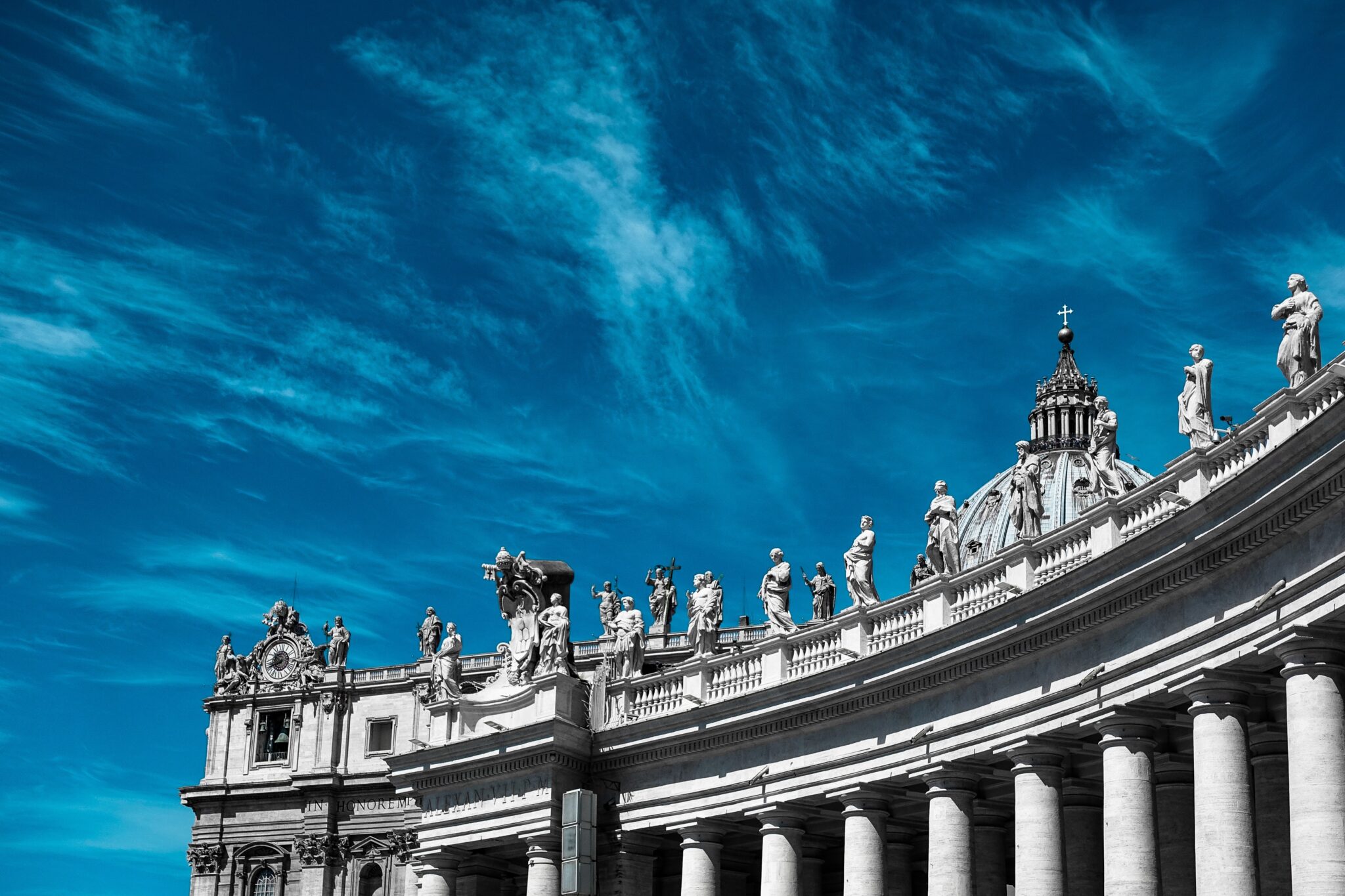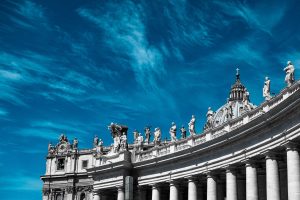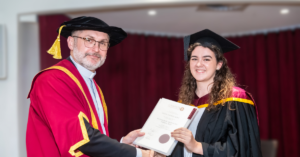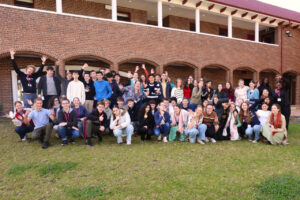Under the current proposed Humanities and Social Sciences national curriculum review produced by the Australian Curriculum Assessment and Reporting Authority, it’s possible for students to remain completely ignorant of the foundations of Western civilisation.
The 267-page Draft Curriculum is available here. The changes to the current curriculum, which include the removal of a reference to our “Christian heritage” in the Year 7 curriculum, are listed here.
So which topics are deemed so important that all Australian students must learn them, and which are deemed merely optional?
Ancient Greece, which gave us philosophy, rationalism, democracy, and tragedy optional. Ancient Rome, which informed so much of our legal traditions optional. Ancient Israel, which gave us most of the Biblea foundational text of Western civilisation and out of which Christianity emerged ignored entirely. The European Middle Ages which produced universities, some of the greatest architecture known in human history, modern script, and the Magna Cartaoptional. The Renaissance, which gave us Leonardo, Michelangelo, and the beginnings of the modern Westoptional.
Not only are the above historical periods optional, but they are deemed no more important than competing options, such as ancient India, the Ottoman Empire, China, and Japan under the Shoguns.
And yet “First Nations Peoples” are apparently more important in terms of understanding the society that has and will shape the lives and minds of Australians than Greece, Rome, Israel, the Magna Carta, and Christianity.
Indeed, Indigenous history, culture, and issues pervade the curriculum all the way through from Year 1 to 10.
A word search of the draft document is telling:
Western (civilisation)—5
Christian—12
European—26
British/English—28
Asia—129
Aboriginal/Indigenous/First Nations People—177
In fact, it is assumed that students will “appreciate and celebrate the diversity of Aboriginal and Torres Strait Islander cultures.”
How bizarre it is that a whole curriculum is shaped around ensuring the celebration of cultures that, at best, represent 3.3% of the population according to the 2016 national census. Cultures which, however fascinating and impressive, played little part in the shaping of the ideas and institutions that have created the society that we expect our students to be able to understand and contribute to.
According to 2016 statistics from the ABS, 54% of Aboriginal and/or Torres Strait Islanders identify as Christian. That’s actually slightly more than non-Indigenous Australians. But only 2% identify with “Australian Aboriginal/Traditional” religion. Put in raw numbers, out of the figure of a total of 649,169 Aboriginal and/or Torres Strait Islander Australians listed by the ABS, 7773 identify as adhering to Australian Aboriginal/Traditional religion, in contrast with 347,572 who identify with a denomination of Christianity.
In other words, the overwhelming number of Indigenous Australians would seem to identify more with Christianity than with traditional Aboriginal religions, which is not to deny the presence of syncretism between the two.
In the whole of the 267-page draft curriculum, the reader will not find one expectation for students to “celebrate” Australia, Western civilisation, or the Judeo-Christian heritage that so shaped both. Indeed, Christianity in the curriculum is for the most part associated with “power” —a dirty word in the leftist lexicon—and with the destruction of traditional cultures.
The draft curriculum also seems entirely ignorant of a revolution that has been taking place in Australian historiography over the past twenty to thirty years: the rediscovery of Australia’s Christian heritage and its contribution to shaping Australian civil society.
Manning Clark in the first volume of his classic six volume History of Australia set up his classic history of our land by saying our nation was shaped by three forces: Protestantism, Catholicism, and the Enlightenment.
Clark’s insight was largely ignored by most historians in the 1970s but re-discovered in the later 1980s, which led to dozens of histories and studies of the Christian contribution to all aspects of Australian history and civic-cultural development, particularly over the last 20 years.
Recently, for example, the 2018/20 two-volume history of evangelical Protestantism in Australia by Stuart Piggin and Robert Linder shows how this strand of Christianity was a major force shaping colonial culture. The Catholic contribution to social and political life has been profound and well researched. A history of the Bible in Australia by Meredith Lake swept the New South Wales Premier’s history prize, as well as the Prime Minister’s literary prize in 2020. Remarkable histories have also been written over the past 25 years of the interaction between Christian clergy and missionaries with Indigenous Australians.
Scores of other books and journal articles over the past ten years have recovered the massive influence Christianity has had on Australian politics, literature, education, the media, charities, banking, industrial relations, votes for women, federation, and Aboriginal rights movements. In fact, it’s hard to think of any other social force more formative on Australian society right up to the mid-20th century than Christianity.
The new curriculum seems to know little to nothing of this, or at least has practically no interest in it.
In fact, as well as wanting to erase a lonely reference in the current curriculum to Australia’s “Christian heritage”, the proposed curriculum wants to assert that Australia is a “secular nation”. But in what sense is Australia a secular nation when the 2016 national census recorded that over 52% of Australians identify as Christians, around 8% identify with non-Christian religions, and 30.1% declare “No Religion”. The word “secular” is nowhere to be found in our constitution.
It would be most accurate to describe Australia as a pluralistic, multi-faith nation, with an overwhelming Christian religious majority and a deep Christian heritage.
What constitutes the defining values that shaped Australia? According to the proposed curriculum, “White Australia, egalitarianism, conformism to benevolent government, both monarchism and republicanism, masculinism and secularism, and the idea of ‘Australian values’.” Again, secularism is present but Christianity is nowhere to be found, nor is Britishness, which was a defining ideal from 1788 right up to the 1960s.
Eighty years ago Australia’s longest-serving Prime Minister Sir Robert Menzies—whose name is entirely absent from the draft curriculum, as is the name of the party he founded—warned of some teachers who may “yield to [the] temptation… to teach history… so as to justify some current and personally held political theory” and thus “to deface history and obscure the lessons it can teach.”
The message we need to send to Canberra is that we must and can do better for both young Australians and those entrusted with the sacred task of teaching them.
A humanities and civics education should not simply be a vehicle for indoctrinating the minds of Australians with the “personally held political theory” of policy technocrats: multiculturalism, the diversity cult, environmentalism, and Indigenous activism. It should enlighten students as to the origins and nature of society that has produced the peaceful, dynamic, democratic, and prosperous country that, we hope, still holds much potential. In other words, Western civilisation.





